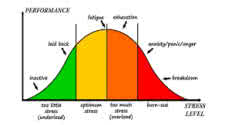Amino Acids and Stress Hormones - Relation?

Practical Nutrition Tips & Overall Well Being
Most nutrition experts say that many athletes, including bodybuilders, consume far more protein than they need. This assertion is often based on nitrogen studies, as nitrogen is the element that differentiates protein from carbohydrates and fats. Increased nitrogen retention favors
an anabolic, or building, stimulus in muscle tissue.
While the protein synthesis aspect of muscle building requires limited amounts of amino acids, an often overlooked factor is the catabolic effects of stress hormones, such as cortisol. In fact, studies show that the increased protein synthesis associated with anabolic steroid use
is of relatively short duration. Any gains fostered by steroids after that accrue from an anticatabolic effect. In short, anabolic steroids somehow prevent the catabolic effects of stress hormones in muscle, similar to the way insulin works.
Scientists have noted in various studies that infusing stress hormones, such as epinephrine, cortisol and glucagon, decreases muscle protein synthesis mechanisms for six hours. These catabolic hormones also adversely affect amino acids in muscle, causing a decrease in essential
amino acids and an increase in alanine. Alanine is transported to the liver, where it's rapidly converted into glucose. An obvious question is, what would happen if you infused extra amino acids into muscle during stress conditions? Swedish researchers recently set out to find the
answer. They first administered epinephrine, cortisol and glucagon intravenously into healthy male subjects. One group received just the stress hormones, a second group got the stress hormones followed by amino acids two hours later and a third group got only the amino acids.
The amino acids prevented the loss of muscle aminos caused by stress hormones, including glutamine, an amino considered vital for muscle protein synthesis. Although the amino acid infusion didn't contain glutamine, it did contain glutamate, histidine, arginine, valine and isoleucine.
Some of these aminos are converted into alpha-ketoglutarate, which in turn converted into glutamine. This is significant because when you take glutamine orally, much of it doesn't make it into muscle, Glutamine is a preferential energy source for intestinal cells, which shed every
three days. It's also the preferred fuel of certain immune cells. In fact, the lowered immunity that commonly occurs with overtraining syndromes is caused by the loss of glutamine from muscle.
Increasing amino acid intake will encourage muscle glutamine production, which favors an anticatabolic effect that neutralizes stress hormone-induced loss of muscle amino acids. Thus, while only a limited amount of protein is needed for muscle protein synthesis, extra protein intake
may provide the amino acids needed to offset stress reactions in muscle.
The Pizza Mystery Solved
I love pizza; in fact, I'd say it's my favorite food. Many nutritionists believe that it's wrong to characterize pizza as a "junk food." Some even go so far as to say that if you combine pizza with a glass of milk and a salad, you have a nutritionally balanced meal. Although pizza appears to be a high-fat food, it meets the not more than 30 percent fat content mandated by the American Heart Association.Besides, most pizza contains low fat mozzarella cheese and olive oil, a monounsaturated fat that's good for you. Based on the above points, I've always wondered why pizza unusual effectiveness in maintaining bodyfat stores appears to go beyond its calorie or fat content. An article in Diabetes Care at least partially clears up the mystery.
The study looked at the effects of eating three slices of pizza on eight people who had insulin-dependent diabetes. As expected, the subjects' glucose, or blood sugar, levels increased shortly after they ate the pizza. The surprise came when their glucose levels continued to increase four to nine hours later. When the same people ate another meal containing the same proportions of carbohydrate, protein and fat as the pizza meal, their glucose showed the same initial increase but didn't continue to increase as it had with the pizza.
The researchers suggest there's something unique about pizza that causes this prolonged glucose rise. The connection to bodyfat maintenance is that increased glucose levels also promote increased insulin release. Whenever insulin is released, bodyfat is either synthesized or maintained, So pizza is far more fattening than its caloric makeup would indicate, due to excessive insulin secretion.
Kidneys and Protein
Those who say that eating too much protein is harmful often point to the kidneys as the organs most stressed by a high-protein diet. Consuming a lot of protein does cause changes in kidney structure and function. For example, the glomerular filtration rate, or kidney filtering function, increases after protein is eaten, as does blood flow through the kidneys. In some cases, these can lead to changes like increased kidney size and narrowing of the kidney filtering units.Researchers from the Washington University School of Medicine in St. Louis found that much of the harmful effects of a high-protein diet were due to a relative deficiency of the amino acid L-arginine. This amino is used by the liver to produce urea, a by-product of amino acid metabolism. If there's not enough arginine available, the kidneys must work harder to excrete protein waste material. Eventually this causes the bad effects noted earlier.
Nathan Pritikin once wrote that the high incidence of reduced kidney function in older people resulted from a lifetime of excessive protein intake. He referred to studies that showed that protein increases the blood pressure within the kidneys' filtering units, gradually destroying them. Arginine serves as the precursor to a substance called nitric oxide that relaxes blood vessels. Perhaps this is how it prevents kidney damage from high- protein diets.